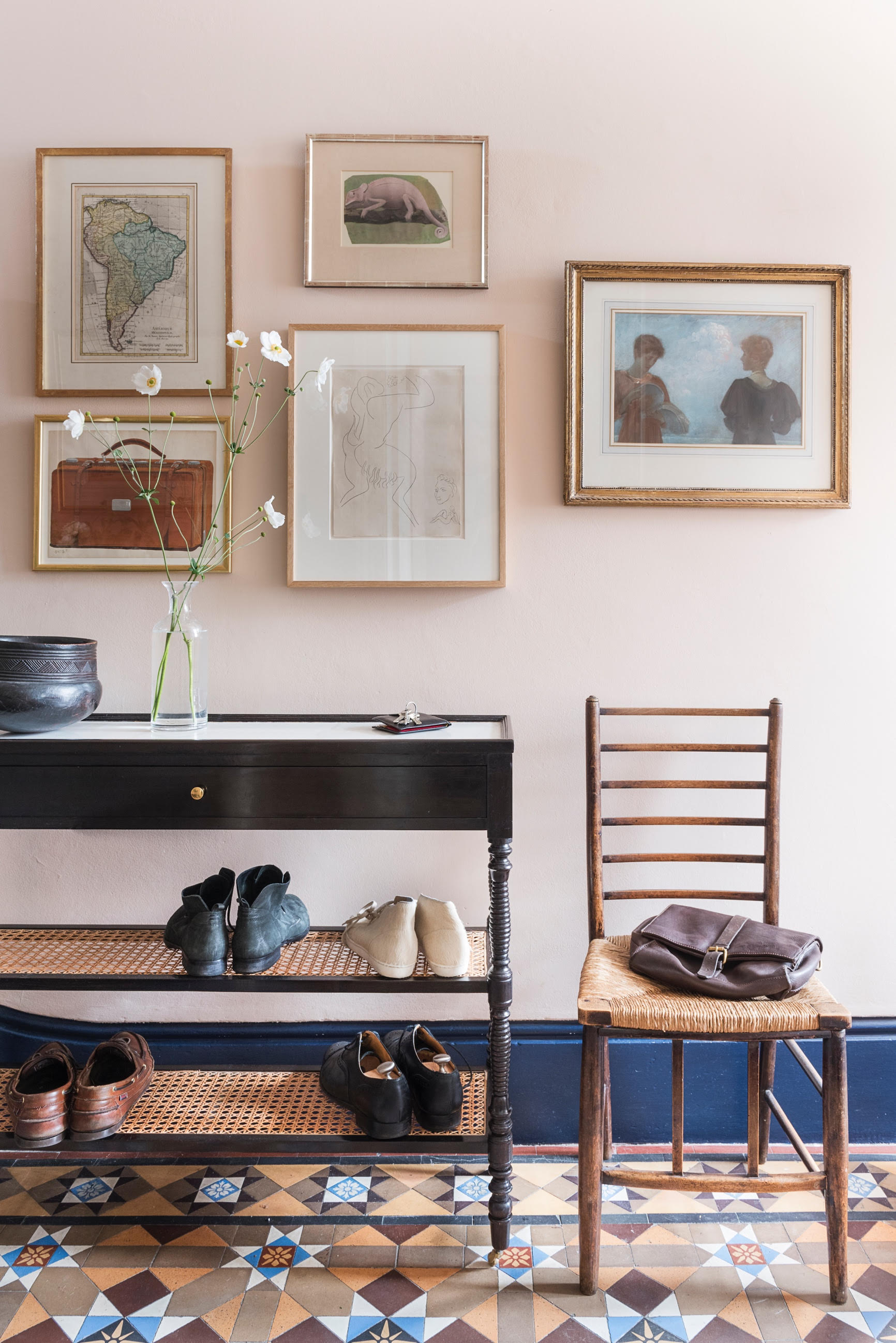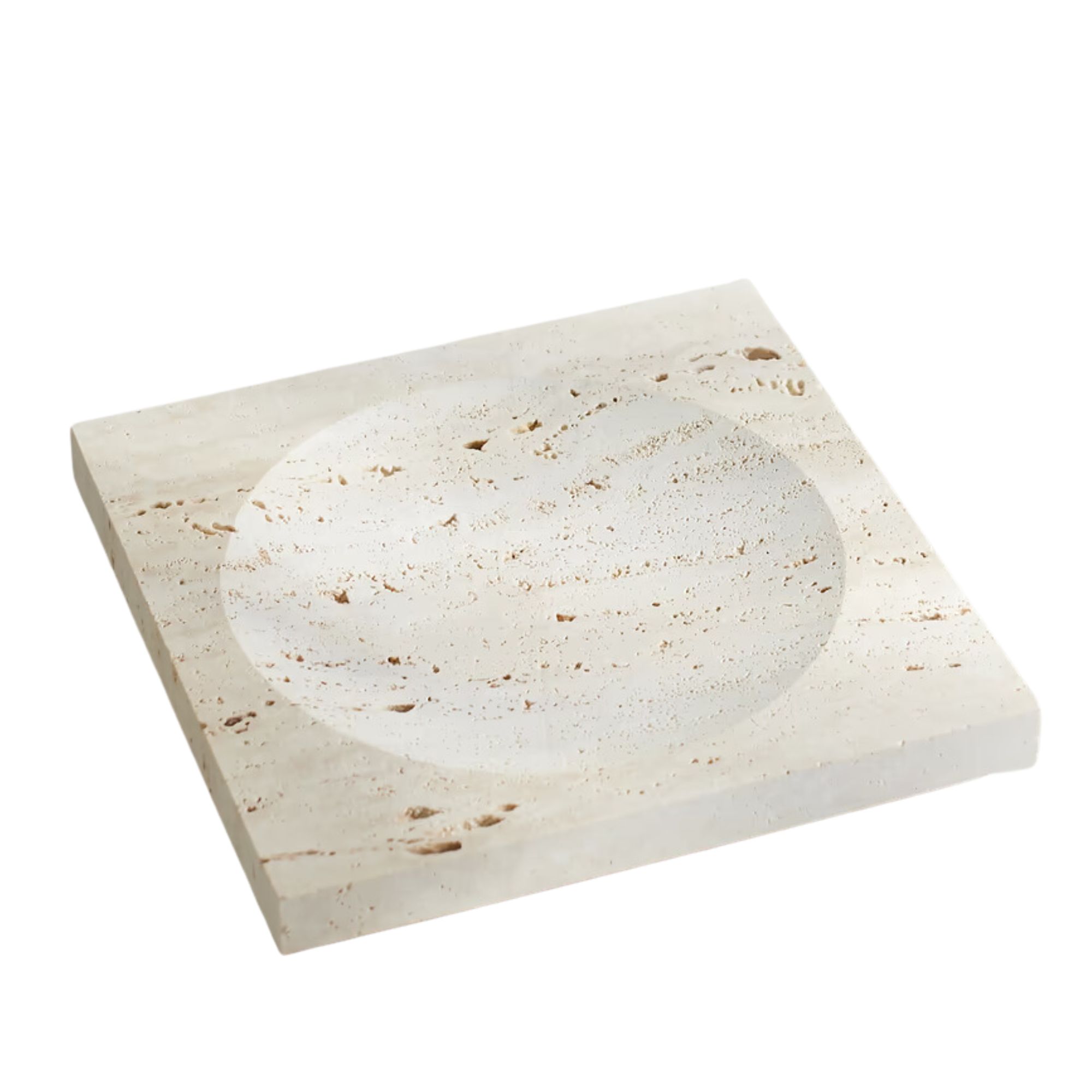9 Things People Who've Got Their Life Together (and an Uncluttered Entryway) Never Forget to Do
Want to know the secret to clutter-free and space-abundant entryways? These are the clever and easy tricks organized people follow

Charlotte Alldis

Entryways or "landing pads" can be clutter magnets as they're spaces that everything and everyone passes through multiple times a day. When it comes to organizing an entryway, the mental aspect plays a bigger role than most people realize. It’s not just about having a tidy space; it’s about how that space makes you feel.
Tidy people seem to understand this intuitively — they recognize that an organized environment supports mental clarity and reduces stress. It’s not just about looks; it’s about the emotional relief that comes from stepping into a space that feels in control.
Interior designer Nina Garbiras, founder and principal of Fig NYC, says “the more you treat the entryway like another room, the less it will feel like a mere passthrough. Walking in and dropping the weight of everything we carry throughout the day feels great, but if you take the time to tuck it away, your entry stays free of clutter and becomes a meaningful transition between you and the mean streets.”
It's often overlooked just how much entryway ideas can set the tone for the rest of your home. The moment you walk in, your brain takes in the state of that space. If it’s cluttered, your mind feels cluttered. If it’s organized, you can take a deep breath and relax.
So, if you're looking for ideas to keep your entry hall clean and clutter-free, here's nine things people with uncluttered entryways do.
1. Designate a "Drop Zone"

“One of the simplest ways to keep entryways clutter-free is by creating a designated drop zone for essentials like keys, bags, and shoes,” says New York based Principal Designer and Founder of Arsight, Artem Kropovinsky. “At home, I use a wall-mounted shelf and small hooks by the door to keep items off the floor and easily accessible.”
By creating a designated drop zone as part of your entryway table decor, you are able to contain any mess and clutter to one specific area in the entryway that can be easily sorted through and put away in its correct place, preventing clutter from spreading.
The Livingetc newsletters are your inside source for what’s shaping interiors now - and what’s next. Discover trend forecasts, smart style ideas, and curated shopping inspiration that brings design to life. Subscribe today and stay ahead of the curve.
Designer Laura Stephens says “pretty baskets work really well. A drawer in a console is a life saver for hallway clutter such as keys and wallets. Otherwise a slim tray on a hallway table helps to contain the clutter! If floor space is limited you can add baskets with hooks on the wall for gloves, hats etc.”
Essentially finding ways to order the chaos in the most aesthetically pleasing way possible is key. That way, even if you still need those items to be on display, they will look considered. It also has the added benefit that in doing so everything will have a place and will mean you aren’t desperately rummaging for 20 minutes everyday to find your car keys!
2. Keep Only the Essentials

“Tidy people live by the “one in, one out” rule, ensuring that items don’t accumulate,” says Eileen Roth, organizing expert, founder of Everything in its Place, and author of Organizing for Dummies, (available at Amazon). “By limiting what's kept in the entryway to just a few essentials, you can prevent the buildup of unnecessary clutter.”
For a home, keeping shoes, jackets, and bags in the entryway can be too much and isn't actually essential (that's where a mudroom comes in handy). A good rule of thumb is if it's not used daily, then it shouldn't be left in the entryway.
3. Utilize Vertical Space

In a clutter-free entryway, the floor should be kept as clear as possible. Tidy individuals often use shoe racks or hidden cubbies to neatly store away footwear, bags, and other items.
When floor space is limited, make the most of vertical space. Install wall hooks or a coat rack. Hooks keep things organized while maximizing space. Plus, it's a great way to keep the floor open and clutter-free.
Designer Nina Garbiras says, “‘if you cannot avoid having coats, shoes, bags, and stacks of newspapers - make it pretty. Put up a couple of chunky oversized hooks for your coats, scarves, extra totes, etc, but edit the space frequently. I'm not talking about being neurotic; I'm saying don't be lazy. If there is a closet for the big stuff, use that, for goodness sake.”
4. Float consoles on the wall

Entryway console tables are never a bad idea. They can: create a focal feature; anchor a a mirror; soften the space with a vase or a lamp; and store essentials like car keys. Finding one with drawers takes the function of this hero piece of furniture up another level.
Analisse Taft-Gersten from The 1818 Collective explains how “if you can fit a long console in the hall and you need to declutter, try to choose one that has drawers. You can hide small items and accessorize on the top. For instance, I chose this floating leather cabinet as I didn’t want to eat up the floor space in the small area.” For bonus points, a wall-hanging one takes up even less space.
5. Incorporate Storage Furniture

If you have a small entryway, home improvement expert Tommy Mello suggests utilizing storage benches and slim cabinets as they can be your lifesavers. Opt for furniture pieces that offer storage options such as benches with hidden compartments or ottomans with built-in storage like the Vendage Bench by MacKenzie-Childs available at Wayfair. These pieces allow for items to be stored neatly out of sight while still being easily accessible when needed.
6. Create a Shoe System

Even if you are lucky enough to have significant in built storage, it is worth considering additional shoe storage that is on display. A strict shoe system helps keep things orderly. In most cases, shoe racks are the best shoe storage solution for entryways as they typically come in a variety of styles and sizes. But large baskets underneath a bench in the entryway or, as Kate Guinness suggests, a console with shelves below for shoes also works.
These solutions can be handy for occasional use - perhaps when you are in a rush and don’t have time to store your shoes away properly in the cupboard, or when a guest visits. As long as these are regularly edited (so the shelves aren’t full to the rafters with dozens of wellington boots and garden shoes), it can be an attractive, and practical solution to making sure shoes stay off the floor.
To find the best style for you, you need to ask yourself: should a shoe rack be open or closed? Despite an open shoe rack making it easier to find and select your shoes, a closed rack keeps everything hidden and prevents shoes falling out when reaching for your chosen pair.
7. Regular Decluttering Routine

According to Daniel Brown, Interior designer and CEO of handycleaners.com, committing to a regular decluttering routine makes a huge difference and alleviates you from the build-up of clutter over time.
“I always do a weekly decluttering sweep of the entryway. This rule is crucial to maintaining order,” says Daniel. “Anything that doesn't belong gets put away, and shoes or jackets that haven't been used in a while get moved to a different area. Regular maintenance prevents buildup over time.”
8. Add Visual Cues for Organization

Sometimes, visual reminders are a great way to stay organized. “These small cues help to ensure everything has a place and encourages everyone to stay tidy," says interior designer Ariella Duker. “There are a number of ways to add visual cues, but the easiest way by far is by labeling."
Ariella recommends labeling each basket or bin with the things that should be stored inside them, to make it clear and help orderly arrangement. (For example, labeling baskets with 'winter coats' or 'kids shoes'.)
Where space is shared among several family members, it might also be a good idea to attach labels in specific sections, she adds. This helps to show where each person belongings should go and minimizes overflow into other areas.
9. Give the Space a Proper Function

Clutter can often accumulate when a room or a space doesn't have a clearly defined function. It is always worth thinking creatively about the entryway and what you need from it. Perhaps you could use it to solve a problem elsewhere in the house. Maximizing the use of the space will increase dwell time, and this increased attention and focus should help to streamline unnecessary clutter.
A brilliant example of this is how Sophie Rowell from Cote de Folk created a desk space in an entrance into a house that was previously used as a dumping ground. She explains further “we elevated the space and made it work really hard by doubling up as a second working from home spot, looking out onto the front yard on the left. Shelving and under bench drawers help to keep things tidy.”
Often, clutter comes from holding onto things we don’t need because they remind us of something or someone. Tidy people tend to let go of things more easily. They’re more intentional about what they keep, which means they aren’t weighed down by unnecessary items. That mindset shift is huge when it comes to maintaining a clutter-free environment — it’s about making peace with letting go of what doesn’t serve you anymore.
If you do feel like things are getting out of hand, sometimes it helps to get a fresh set of eyes. Professional organizers or even interior designers can offer practical advice, but they can also provide emotional relief by helping you tackle the clutter in a way that feels manageable.

Seraphina is a contributing editor at Livingetc, writing Advice features on design, renovation and organisation. Seraphina is a qualified Interior Designer from KLC School of Design having worked at London-based interior design agencies Anouska Hempel and ND Studios. Seraphina has also completed her MA degree in Magazine Journalism at City, University of London, with previous experience including writing for Homes & Gardens, Women's Health, Food & Travel and Fabulous Magazine.
- Charlotte AlldisContributor






